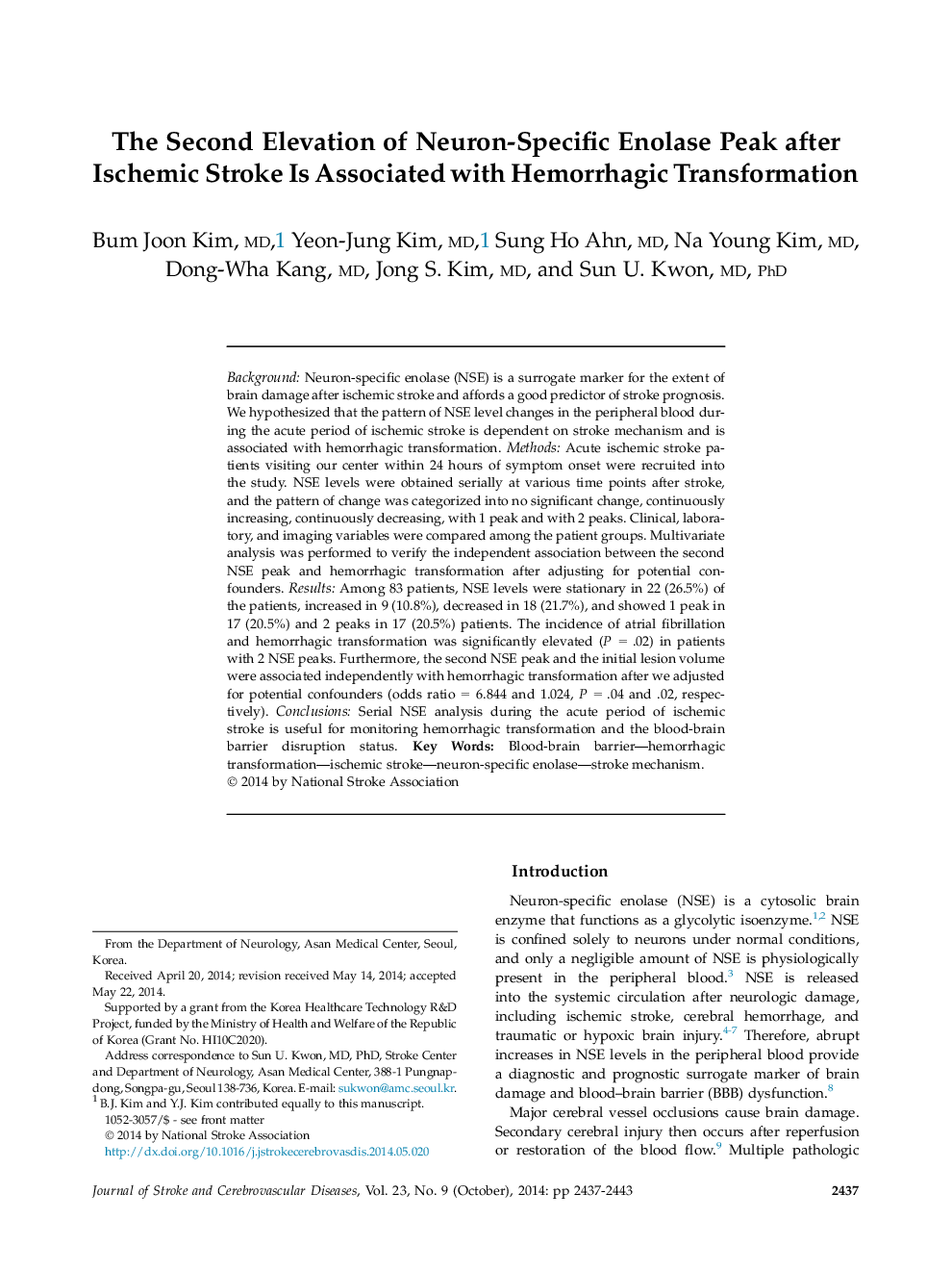| Article ID | Journal | Published Year | Pages | File Type |
|---|---|---|---|---|
| 2702514 | Journal of Stroke and Cerebrovascular Diseases | 2014 | 7 Pages |
BackgroundNeuron-specific enolase (NSE) is a surrogate marker for the extent of brain damage after ischemic stroke and affords a good predictor of stroke prognosis. We hypothesized that the pattern of NSE level changes in the peripheral blood during the acute period of ischemic stroke is dependent on stroke mechanism and is associated with hemorrhagic transformation.MethodsAcute ischemic stroke patients visiting our center within 24 hours of symptom onset were recruited into the study. NSE levels were obtained serially at various time points after stroke, and the pattern of change was categorized into no significant change, continuously increasing, continuously decreasing, with 1 peak and with 2 peaks. Clinical, laboratory, and imaging variables were compared among the patient groups. Multivariate analysis was performed to verify the independent association between the second NSE peak and hemorrhagic transformation after adjusting for potential confounders.ResultsAmong 83 patients, NSE levels were stationary in 22 (26.5%) of the patients, increased in 9 (10.8%), decreased in 18 (21.7%), and showed 1 peak in 17 (20.5%) and 2 peaks in 17 (20.5%) patients. The incidence of atrial fibrillation and hemorrhagic transformation was significantly elevated (P = .02) in patients with 2 NSE peaks. Furthermore, the second NSE peak and the initial lesion volume were associated independently with hemorrhagic transformation after we adjusted for potential confounders (odds ratio = 6.844 and 1.024, P = .04 and .02, respectively).ConclusionsSerial NSE analysis during the acute period of ischemic stroke is useful for monitoring hemorrhagic transformation and the blood-brain barrier disruption status.
